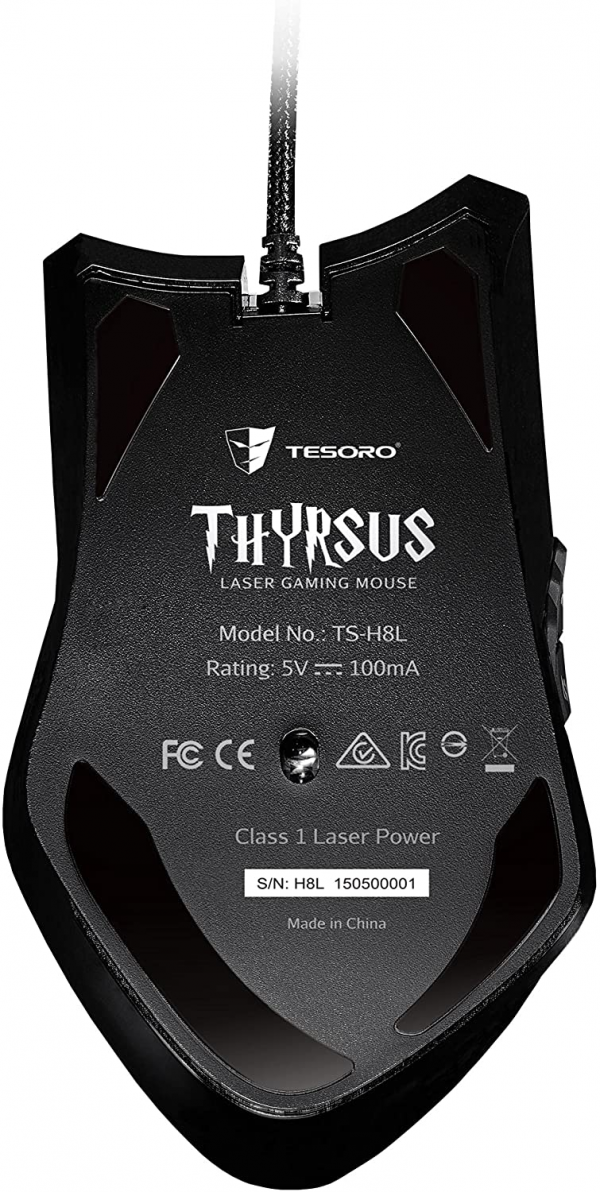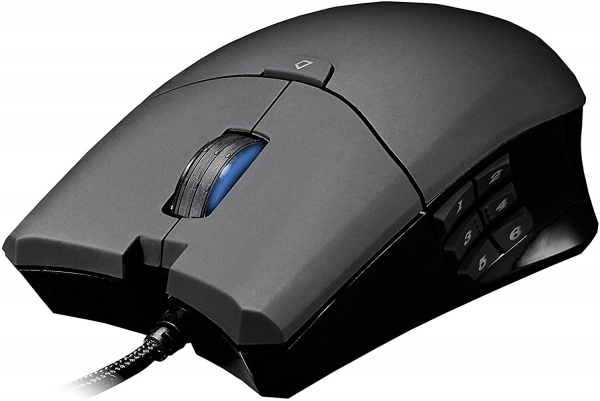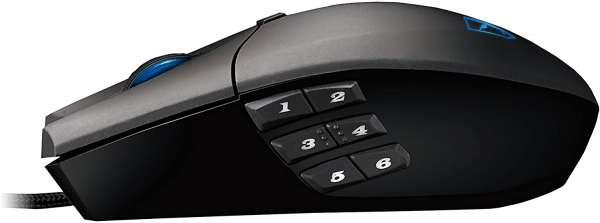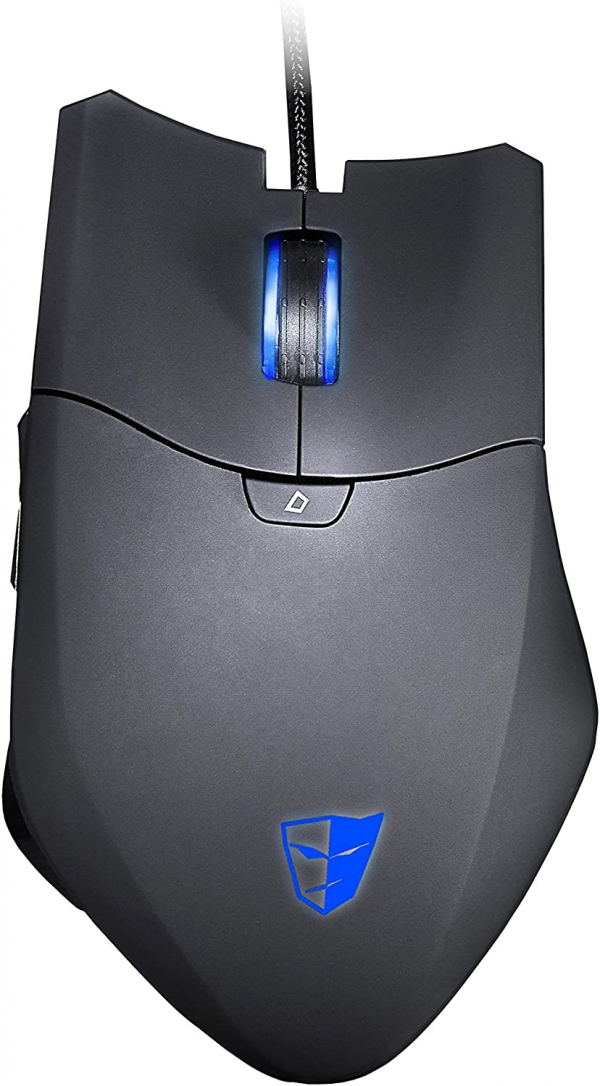Tesoro
Tesoro Thyrsus Spectrum: a fair passable RGB gaming mouse
Aprox. 39€
See specificationsAfter the Gandiva, Tesoro returns to our columns with the Thyrsus Spectrum, a mouse with an unpronounceable name and a… particular appearance. Overview of the capabilities of the machine from the American brand.
Positive points
Rather correct handling.
DPI adjustable on the fly.
Reactive main buttons.
Braided cable.
Fluid gliding on carpet.
Bad points
Low-end materials.
Overall fragility.
Poor quality of switches.
For right, medium and large hands only.
Laser sensor which strangely does not work on glass.
Imprecise wheel.
No horizontal scrolling.
Spartan software.
Weak backlight.
Our review
Ergonomics
Less extravagant than the Gandiva, the Thyrsus, however, has a shell whose shape can leave one wondering when unpacking. The mouse indeed seems all lopsided, in addition to presenting relatively imposing dimensions.
It measures 12.4 x 7.7 x 4.1 cm and weighs 103 grams. Rather average measurements, but it should be noted that the back of the mouse is very large compared to most of its competitors, which could destabilize small hands.
Despite the apprehension that we felt in front of the tortuous aspect of the Thyrsus, the grip is rather pleasant, even if the protrusion on the right of the device hinders the placement of the little finger, which is found either at the away from his little comrades, either glued to the ring finger. It should be noted that this mouse is only for right-handers. The grips in palm grip and claw grip are to be preferred given the dimensions of the mouse.
The black soft-touch coating is comfortable at first but degrades quickly to leave a slight feeling of adhesion of the mouse to the palm. It is also quite fragile and messy, particularly sensitive to sweaty hands. The shiny plastic contour, just as alterable since it accommodates all possible fingerprints and dust. We can also think that this cheap plastic gives a low end to the Thyrsus.
Side buttons, the two main are very wide and accommodate fingers well. We can inflict repeated and frenzied presses on them without blocking them and they present a satisfactory return.
We are less convinced by the six buttons that can be activated under the thumb. If their layout makes them easily accessible, the support is quite bad, with insufficient feedback which sometimes makes us wonder if the order has been taken into account. We will not insist on their twisted appearance nor on the font used for the numbers of the buttons, which left us perplexed.
Same thing for the button controlling the DPI level, which is hard to activate and which has misfires when pressed. The backlit wheel is barely better with its sticky feel and lack of precision when scrolling. There is also an imperfect click, the wheel missing rebound.
It is recognized, however, that the Thyrsus presents a surprising fluid glide on a carpet thanks to its thick and curved pads. Unfortunately, they also wear out much faster than those we have found in the competition.
Finally, Tesoro also wanted to surf the RGB trend and add a colored backlight to his mouse. Rather discreet (on the wheel and the logo only), it even appears muffled and presents rather faint colors. Unlike other brands that offer to choose from a palette, here we must adjust the color by adjusting the red, green and blue. The only animations available are the breathable effect and the random color cycle.

Precision
The Thyrsus has a laser sensor with a maximum sensitivity of 8200 dpi, which is very correct for the game. Surprisingly, unlike the other laser sensors tested by us, that of the Tesoro mouse stubbornly refuses to operate on a glass desk or a reflective surface, like optical sensors. Once placed on a carpet, the mouse behaves normally and the sensor shows fluid movements, even on a screen with high resolution.
It communicates at a frequency of 1000 Hz, which can be lowered to 500, 250 or 125 Hz. You can also navigate between 5 adjustable DPI levels as needed.

Conclusion
Without being entirely catastrophic, the Thyrsus has very insufficient finishes. The materials used are inexpensive, the switches sometimes give random results and the supposedly laser sensor does not work on glass. We will not return either on the twisted appearance of the shell and the bland colors of the backlight. Finally, we recall that the excellent Kova de Roccat was launched at the same price as the Thyrsus; enough to remain definitively doubtful in the face of the Tesoro model.

Specifications

